The Ultimate Guide To Magnet Fishing 2024
What is Magnet Fishing?
Magnet Fishing is like metal detecting underwater; it’s the act of throwing a powerful magnet into a body of water to see what ferrous objects you can find. These magnets aren’t ordinary fridge magnets, they are Neodymium fishing magnets – a rare earth metal that has the strongest magnetic properties of any element in the world. These are the same magnets used in MRI machines and the magnet attaches onto ferrous and metal finds within range. This is why they’re often to referred to as underwater metal detectors.
What Equipment Do I Need to Start Magnet Fishing?
Getting started with magnet fishing doesn’t have to break the bank. You’ll want a sturdy setup to reel in your treasures from the depths. Here’s what you’ll need:
Essentials:
- Neodymium Fishing Magnet: These powerful magnets are the heart of your operation. Choose one suited to your strength and needs. You can find our premium range here
- Rope (10m to 30m, 8mm – 12mm thickness): Opt for a durable braid-on-braid rope to withstand the pulls and tugs of underwater exploration. You can find our range of ropes here
- Protective Gloves: Keep your hands safe from sharp or rusty objects lurking beneath the surface.
- Thread Lock: This handy adhesive secures your eyebolt in the magnet, ensuring it stays put during your dives.
- Bucket: A trusty container to collect your finds and keep them organized.
Good-to-have:
- Carabiner: Attach this to your rope to prevent any accidental losses of your magnet during retrieval.
- Grappling Hook: For those challenging items that require a bit of finesse to bring to the surface.
With these essentials in hand, you’re ready to embark on your magnet fishing adventures!
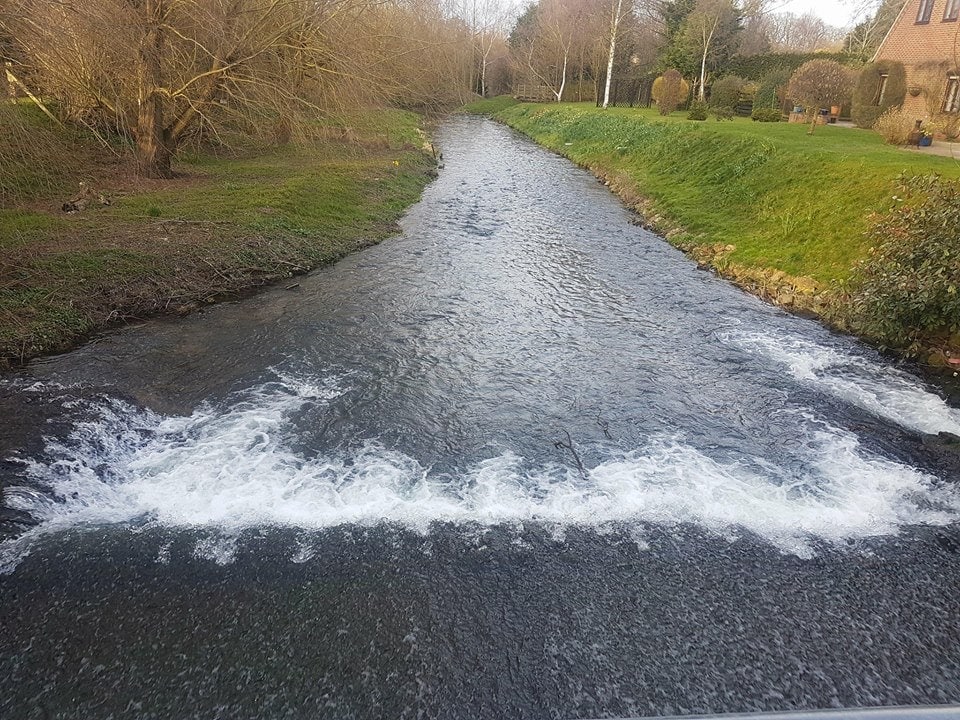
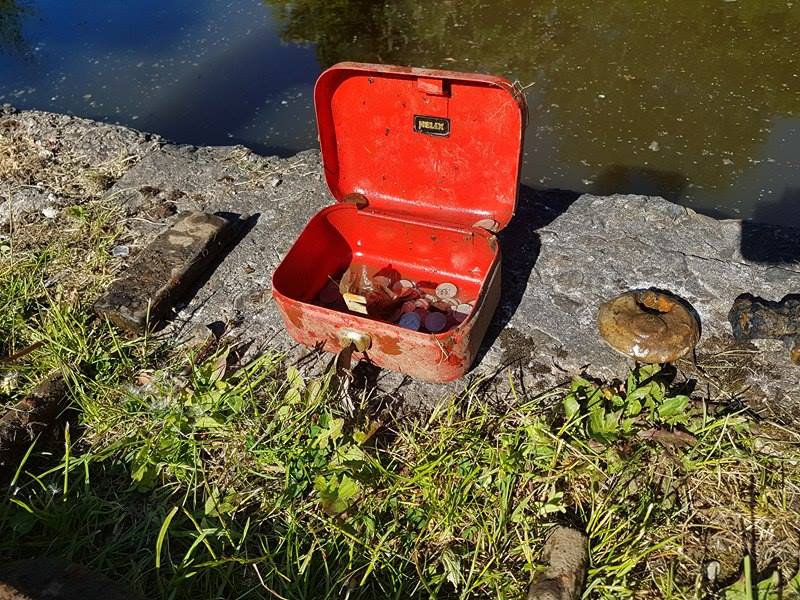
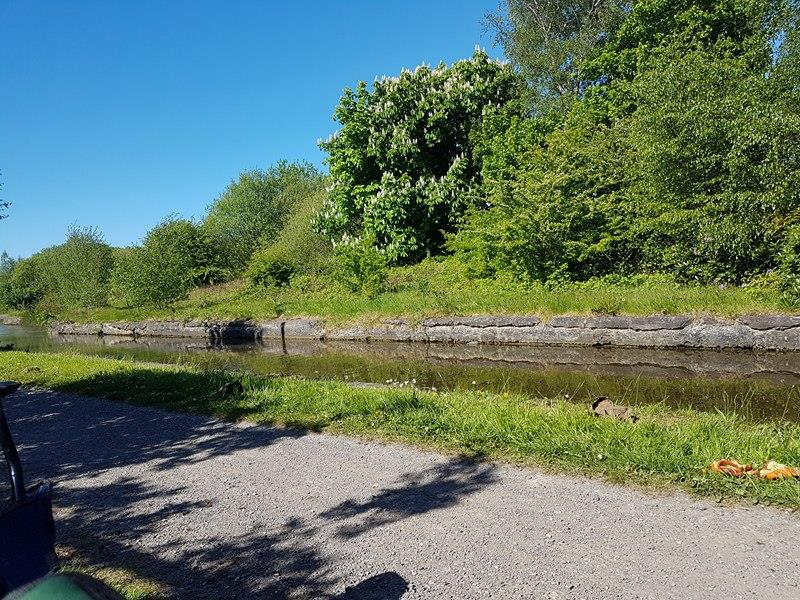
How To Set Up Your Fishing Magnet
A good, solid knot is one of the most crucial things you need to get right when magnet fishing or you risk losing your magnet. There are thousands of different knots to choose from but the majority of magnet fishers, and by majority, we mean 99% of magnet fishers, use the Palomar knot. It’s super easy, super quick and you can see how to do this in the video below or follow these simple instructions
How to Tie a Palomar Knot
- Pass the line through the eye of the hook or swivel. Make sure you have enough tag end to work with, usually around 6 inches or so.
- Double back the tag end. Create a loop by doubling the tag end back towards the hook or swivel, forming an upside-down “U” shape with the line.
- Tie an overhand knot with the doubled line. Take the doubled tag end and pass it through the loop you created in step 2. This forms a simple overhand knot around both the standing line and the tag end.
- Pass the hook or swivel through the loop. Pull the loop over the hook or swivel, ensuring that the knot sits snugly against the eye.
- Moisten the knot. Before tightening, moisten the knot with a bit of saliva or water. This helps lubricate the line and prevents friction damage during tightening.
- Pull both the standing line and tag end. Hold onto the hook or swivel and both ends of the line, then pull them simultaneously to cinch the knot tight. Make sure the wraps of the knot are snug and neatly aligned.
- Test the knot. Give the knot a gentle tug to ensure it’s properly secured and won’t slip under pressure.
If you don’t have your equipment just yet, feel free to bookmark this page and come back when you’re ready.
Top 10 Magnet Fishing Tips
1. Quality Magnet Investment
If you’re serious about unlocking the treasures lurking beneath the water’s surface, investing in a top-notch magnet is key. Neodymium renowned for its magnetic prowess, reigns supreme in this realm, albeit at a premium cost. Beware of cheaper alternatives, often lacking in Neodymium content or utilizing ferrite, which diminishes the magnetic pull, thereby reducing your chances of success. While budget-friendly magnets suffice for dipping your toes into the hobby, true treasure hunters opt for the robust pull of a high-quality fishing magnet.
2. Rope Matters Too
Surprisingly, your magnet isn’t the sole star of the show. Many enthusiasts make the mistake of splurging on a powerful magnet only to skimp on the rope. This oversight can lead to perilous situations as not all ropes are suited for wet environments, risking premature decay. Opt for Braid-on-braid polyester rope ; their exceptional strength and resistance to rot ensure durability, safeguarding your precious finds.
3. Location, location, location…
We’ve already written an article explaining the best places you should go magnet fishing and you can find it by clicking here.
4. Environmental Responsibility
Magnet fishing doubles as an eco-friendly endeavour, contributing to waterway cleanup efforts. However, with great finds comes great responsibility. Dispose of retrieved items responsibly, utilizing a bucket for smaller treasures and contacting local scrap collectors for larger hauls via the Facebook page Dippers and Scrappers.
5. Etiquette Counts
If you go to a location and see people already fishing (you know, those who fish for actual fish), always ask if they’re okay with you magnet fishing there. As we all know, fish respond to the smallest vibrational activity in the water and throwing a magnet into the water could disrupt somebody else’s hobby.
6. To fish, or not to fish, that is the question…
Ensure your magnet fishing adventures remain within legal bounds to avoid trespassing charges or fines. Obtain permission before magnet fishing on private property, and consult authorities like the Canal and River Trust or local councils for guidance on permissible locations.
7. What to do if you find a bomb or weapon
Encounter a potentially hazardous item? Exercise caution and promptly alert authorities without attempting to handle or move the object.
8. Skill Trumps Luck
Many people say magnet fishing is entirely based on luck and they’re wrong. Many people cast their magnet out a few times, find nothing and leave. The next day, somebody finds something in the exact same location that’s historical or intriguing. This happens more than you think and this is why certain individuals consistently find incredible things. It’s all in the method. You have to select the perfect location literally sweep an area to make sure you’ve covered every inch of it.
9. Prioritize Safety
If you’re interested in starting magnet fishing, it’s important to fully understand the potential risks before starting out. The first thing you need to be aware of is the risk of powerful magnets, especially if you’re getting more than one magnet. Always keep two recovery magnets at least 2m away from each other. If they get too close, which is very easy to do, they will violently snap towards each other and they’ll crush anything in their way. If you get your hand trapped between these, you’ll be taking a trip to the emergency room. This is why children must never use magnets without the supervision of a responsible adult. They’re very dangerous.
Since you’ll be spending a lot of time near deep waters, you must have a heightened awareness of the risk of waterways. If you’re a weak swimmer, wear a life jacket in case you fall in. Children are advised to always wear a life jacket and be under the full supervision of adults. And, of course – never get into the water, even if you’ve lost your magnet.
10. Preserve Your Finds
Every find holds the potential for historical significance or hidden treasures. Resist the urge to discard seemingly ordinary items, as thorough cleaning may unveil unexpected marvels. Embrace the spirit of treasure hunting by preserving and exploring each discovery with care and curiosity.
How To Clean Your Magnet Fishing Finds
When retrieving items from underwater environments, it’s crucial to consider their potential age, possibly spanning decades or even centuries, which often results in metal corrosion and rusting. Here, we present a method for safely removing this corrosion without harming the item. It’s worth noting that some items, such as thick metal plates, are robust and less prone to damage, while others are more delicate and require gentler handling during cleaning.
For large solid metal objects encased in a thick layer of rust, a power wash can be highly effective, but it’s important to reserve this method for items that are neither small, intricate, nor fragile. Alternatively, if a power wash isn’t available, a metal scraper can be used to peel away excess rust. Afterward, rinse the surface with warm water, dish soap, and a handheld wire brush to thoroughly clean the item.
Cleaning Small or Fragile Items With Chemicals
Step 1: Soak for 24 hours (or more if needed).
There are a number of chemicals that you can soak your finds in that will penetrate and remove layers of rust. Below is a list of solutions that you can use to penetrate the surface of rust.
- White vinegar
- Citric Acid
- Rustin
- Harpic Power Plus Black (be aware, this works well but can tarnish the colour of lighter coloured metals and coins)
- Cola (less effective but convenient and works well on coins).
When you use these solutions you’ll be putting your finds in an acid bath to penetrate the layer of corrosion. It’s recommended that you soak items for 24 hours for the best effect, however, more stubborn items may need longer.
Step 2: Buff it
Once you’ve finished the acid bath, you’ll see the item really start taking shape. Next, use a fine wire brush or rotary tool like the Dremel 3000 to dig deep and remove every bit of the corrosion. You’ll notice the colour and texture of the item may change and that’s normal – this is when you know you’re getting to the true surface of the item.
Step 3: Protect it from future corrosion
Now you’ve done all of the hard work, it’d be a real shame if the item became rusty again. This is quite normal, so use WD40 or another anti-corrosion oil to prevent rust on the surface again.
How To Clean Your Finds Using Electrolysis
In a nutshell, electrolysis is the process of passing electrical currents through a metal object and this can be used to remove layers of corrosion and rust from metals. It’s super effective and easy to do. Below you’ll see a how-to video showing how to do electrolysis.
Please be careful with this, you’ll be using a battery to pass the electrical current so you must take care when using this method. Once the electrolysis is finished, scrub it with warm water and WD40 to prevent rust from accumulating again.
What Do People Find Magnet Fishing?
Anything that’s ferrous or has ferrous components can be pulled out while magnet fishing. Below are some of the finds that some popular magnet fishers have found:
- Roman and Saxon Coins
- Ancient artefacts
- WW1 and WW2 medals, helmets, artefacts etc.
- Safes and money boxes
- Coins (including different nationalities, dates etc)
- (lots of) Bikes
- Crossbow
- WW2 RAF Pilot’s Axe (these were used to smash the windows of the aircraft if it was shot down).
- Motorcycles
- Vintage mechanical scales
- Money
- Japanese Samurai Swords
- Jewellery and timepieces (some people have found Rolexes! )
- Computers (usually desktop computers)
- Engine parts
- Plasma TV
- Japanese nun chucks
- Mobile phones
- Plasma TV
- Games Consoles
And lots more – we can’t list them all here because we’d be here all day.
What Are The Benefits of Magnet Fishing?
Magnet Fishing: A Multifaceted Hobby
One significant aspect of magnet fishing is its eco-friendly nature, a rarity among hobbies. The amount of scrap retrieved by enthusiasts not only helps clean up water bodies but also earns them appreciation from the boating community, as submerged items often pose risks to barges.
Monetary Potential
Beyond its environmental benefits, magnet fishing can also be financially rewarding. Discovering rare antiques could lead to lucrative arrangements with museums, fetching substantial monthly rental fees. Additionally, some enthusiasts have turned their hobby into a source of income by selling scrap metal, using the proceeds to upgrade equipment or fund other ventures.
Family Bonding and Exercise
Participating in magnet fishing can provide families with memorable experiences and opportunities for outdoor activity. The excitement of uncovering submerged items adds a sense of adventure, making it an engaging pastime for both children and adults alike.
Mental Health Benefits
Magnet fishing has also shown promise in promoting mental well-being. Many individuals find solace in the therapeutic aspect of the activity, using it as a means to alleviate anxiety and depression. The satisfaction of contributing to environmental conservation can be particularly empowering for those struggling with mental health issues.
Support for Autism
For individuals with autism, magnet fishing has proven to be more than just a hobby—it’s a means of overcoming social barriers and building confidence. Many families have reported positive outcomes, with autistic children and adults finding joy and newfound confidence through the activity, translating into improved social interactions and daily life experiences.
-
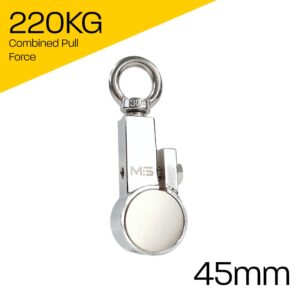
110 Pro™ Clamp Neodymium 220KG / 485LB Pull Fishing Magnet
£49.99 -
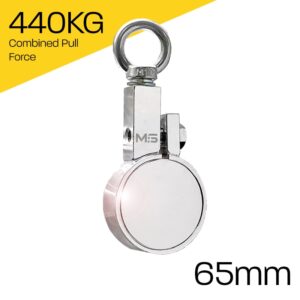
220 Pro™ Clamp Neodymium 440KG / 970LB Pull Fishing Magnet
£75.99 -
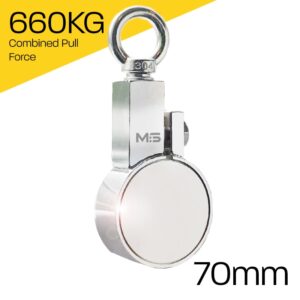
330 Pro™ Clamp Neodymium 660KG / 1455LB Pull Fishing Magnet
£119.99 -

550 Pro™ Clamp Neodymium 1,100KG / 2,425LB Pull Fishing Magnet
£179.95 -
![Heavy-duty fishing magnet brand Magnet Store Genesis 120 360 Degree featuring a nickel-copper-nickel coating and an [PULL] pull force, commonly used in for retrieving items from bodies of water such as canals and rivers.](https://magnetstore.co.uk/wp-content/uploads/2021/04/G120-PP2-c022-300x300.jpg)
Genesis™ – G120™ 360 Degree Neodymium 2,000KG / 4409LB Pull Fishing Magnet
£320.00 -
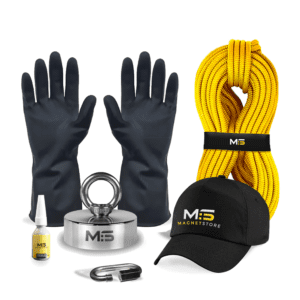
Genesis™ – G65™ 360 Degree Magnet Fishing Kit (650KG / 1,433LB Pull)
£169.99 -
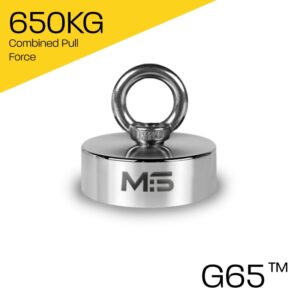
Genesis™ – G65™ 360° Neodymium 650KG / 1,433LB Pull Fishing Magnet
£110.99 -
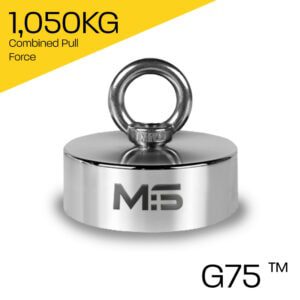
Genesis™ – G75™ 360 Degrees Neodymium 1,050KG / 2314LB Pull Fishing Magnet
£149.99 -
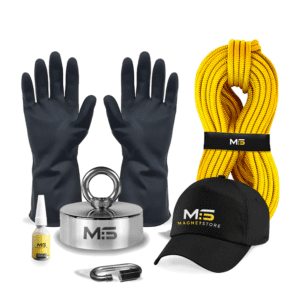
Genesis™ – G75™ 360° Magnet Fishing Kit (1,050KG / 2314LB Pull)
£199.99 -
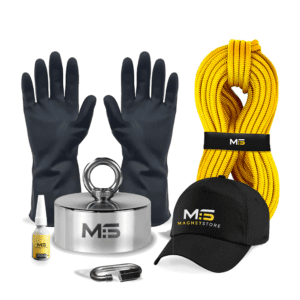
Genesis™ – G90™ 360 Degree Magnet Fishing Kit (1,550KG / 3,416LB)
£269.99 -
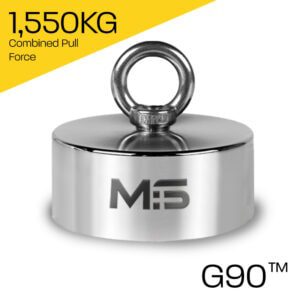
Genesis™ – G90™ 360 Degree Neodymium 1,550KG / 3,416LB Pull Fishing Magnet
£219.99

